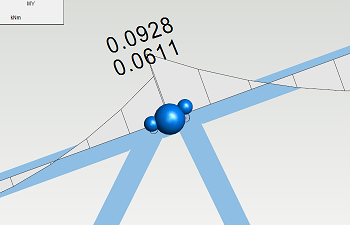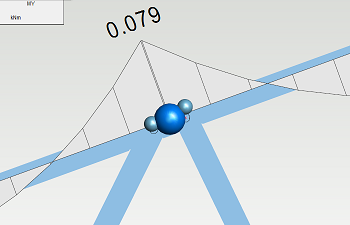Node linking types
Two common ways to link nodes of elements are rigid link and master-slave types of link. The link type defines how translations and rotations are transferred between linked nodes. The link type also affects to the transfer of stresses between connecting parts.
Rigid link
Rigid link can be thought as a beam element with infinite stiffness between linked nodes. The motion of a rigid body is allowed to that element so it can get translational and rotational displacements.
Rigid link transfer the stresses of linked node to the main node rigidly. It takes into account the distance between linked node and main node by producing secondary moments to the main node when transferring shear and normal forces. Secondary moments are point moments which are calculated with formula F x d, where F is the force resultant affecting on linked node and d is the shortest distance between the force resultant vector and the main node.



Master-slave
Master-slave link is tying the translational and rotational displacements of linked nodes to the same. Due to that the imaginary beam element between master-slave type of linked nodes can not get rotational displacements but it remains in parallel with its initial state.
Master-slave link is not considering the distance between the linked node and the main node when transferring stresses.



Significance of selected link type
In the figures below is illustrated the bending moment diagram for the top chord of truss with different types of linking between nodes. All connections are hinged in the truss plane (the picture plane). In the first picture all node links are rigid links and in the second picture they are master-slave links. When using rigid links there is a step in the bending moment diagram at the main node of the top chord. This is caused by the normal force components of diagonal end nodes which are producing point moments to the main node.


When the linked node and the main node are exactly in the same location rigid link and master-slave link have similar behaviour.
Note!
When using rigid link type of links too big distances between linked nodes should be avoided because secondary moments are linearly dependent on the distance. Too big distances between linked nodes may cause unrealistic point moments to the main nodes.
